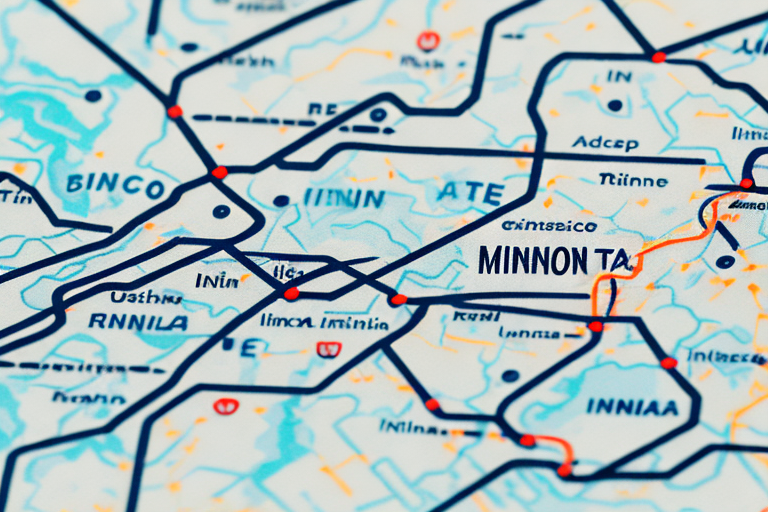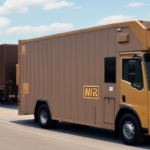Understanding UPS Shipping Rates from Minnesota to Indiana
Shipping packages from Minnesota to Indiana requires a clear understanding of UPS shipping rates. Various factors influence these rates, including distance, package weight and size, shipping method, and seasonal demand. By comprehending how UPS calculates shipping costs, you can obtain accurate quotes and optimize your shipping expenses. This article explores the key elements affecting UPS shipping rates and offers valuable tips to secure the most cost-effective shipping solutions for your needs.
Factors Influencing UPS Shipping Rates
Several factors determine the cost of shipping with UPS, such as:
- Distance: The greater the distance between Minnesota and Indiana, the higher the shipping rates.
- Package Weight and Dimensions: Heavier and larger packages typically incur higher shipping costs due to the increased resources required for transportation.
- Shipping Method: Options like ground, air, or freight shipping vary in price, with faster methods like air shipping generally being more expensive.
- Package Type: Special items, including hazardous materials or fragile goods, may require additional handling, increasing shipping costs.
- Seasonal Demand: During peak seasons such as holidays, shipping rates can rise due to heightened demand and limited carrier availability.
Additionally, the value of the shipment may affect the rate, as higher-value items might necessitate extra insurance or security measures.
According to UPS's 2023 Annual Report, shippers can expect a 5-10% increase in rates during peak seasons, emphasizing the importance of strategic planning for high-demand periods (source).
How UPS Calculates Shipping Costs
UPS determines shipping costs based on several key factors:
- Weight and Distance: Both are primary determinants, with heavier packages and longer distances resulting in higher costs.
- Dimensional Weight: For lightweight but bulky packages, UPS uses dimensional weight pricing to account for the space occupied during transit.
- Service Type: The choice between ground, air, or expedited services impacts the final cost.
- Additional Services: Options like signature confirmation, insurance, and special handling can add to the overall cost.
Accurate measurement of your package’s dimensions and weight is crucial. Utilize the UPS shipping calculator to obtain precise estimates. Implementing efficient packaging can help reduce dimensional weight and overall shipping expenses.
Research indicates that optimizing package size can lead to a cost reduction of up to 15% on shipping expenses (UPS Business Insights).
Comparing UPS Shipping Methods
UPS offers various shipping methods to cater to different needs:
- Ground Shipping: The most economical option, ideal for non-urgent shipments. Delivery typically takes 1-5 business days.
- Air Shipping: Faster delivery times, such as Next Day Air, come at a higher cost.
- Freight Shipping: Suitable for large and heavy items, offering flexible pickup and delivery schedules.
Choosing the appropriate shipping method not only affects cost but also packaging requirements and delivery times. For instance, air shipments may mandate sturdier packaging to prevent damage, while freight shipments accommodate oversized items but may require specialized handling.
Understanding these differences ensures that you select a shipping method that balances cost, speed, and the specific needs of your shipment.
Obtaining Accurate UPS Shipping Quotes
To secure precise UPS shipping quotes, provide detailed package information, including dimensions, weight, and destination. Using the UPS shipping calculator can offer an estimate, though final costs may vary based on actual measurements.
Consider the type of service required, as different services have unique pricing structures. For frequent shippers, exploring UPS’s discounts for bulk shipments or specific destinations can result in significant savings.
According to UPS, businesses that leverage volume discounts can reduce their shipping costs by up to 20% annually (source).
Strategies to Reduce UPS Shipping Costs
Implementing the following strategies can help minimize UPS shipping rates:
- Select Slower Shipping Methods: Choosing ground over air shipping can lead to substantial cost savings.
- Optimize Packaging: Use appropriately sized packaging to avoid dimensional weight surcharges and reduce material costs.
- Leverage Third-Party Shipping Services: These services often negotiate better rates with UPS and can pass savings on to you.
- Ship to Commercial Addresses: Shipping to business locations is generally cheaper than residential addresses.
- Utilize UPS Access Points: Shipping to access points can be more affordable and offer greater flexibility for package pickup.
Implementing these cost-saving measures can lead to an average reduction of 10-25% in shipping expenses (source).
The Role of Package Size and Weight in Shipping Costs
The size and weight of your package are critical factors in determining UPS shipping rates. Heavier and larger packages consume more resources, leading to higher costs. To optimize shipping expenses:
- Choose the Right Packaging: Use materials that protect your items without adding unnecessary weight or bulk.
- Measure Accurately: Ensure precise measurements to avoid overpaying due to dimensional weight pricing.
For example, a package weighing 10 lbs with dimensions of 12x12x12 inches may be priced similarly to a 20 lbs package at the same dimensions due to UPS’s dimensional weight pricing model.
Understanding how UPS calculates dimensional weight can help you make informed decisions about packaging and shipping methods, ultimately reducing costs.
Selecting Appropriate Packaging for Your Shipments
Choosing the right packaging is essential for protecting your items and managing shipping costs. UPS offers a variety of packaging options tailored to different shipping needs:
- Standard Boxes: Suitable for most items, available in various sizes to accommodate different dimensions.
- Envelopes: Ideal for documents, apparel, and lightweight items.
- Tubes: Perfect for posters, blueprints, and other rolled materials.
For fragile or sensitive items, use cushioning materials like bubble wrap or packing peanuts to provide extra protection. Additionally, consider using insulated or moisture-resistant packaging for items sensitive to environmental conditions.
UPS also promotes sustainable packaging solutions, offering eco-friendly options made from recycled materials. Adopting sustainable practices not only reduces environmental impact but can also enhance your brand's reputation.
Implementing proper packaging techniques can minimize damage during transit and reduce the likelihood of additional shipping fees resulting from package irregularities.
Understanding UPS Delivery Timeframes and Options
UPS provides a range of delivery options to meet diverse shipping needs:
- Next Day Air: Ensures delivery by the next business day, ideal for urgent shipments.
- 2-Day Air: Guarantees delivery within two business days, balancing speed and cost.
- Ground Shipping: Offers economical rates with delivery typically within 1-5 business days.
- UPS Access Point: Allows packages to be delivered to convenient retail locations for pickup.
Estimated delivery timeframes are available on the UPS website and are based on the chosen service and destination. It's important to account for potential delays caused by weather, transportation issues, or other unforeseen circumstances. Planning shipments well in advance and selecting appropriate delivery options can help ensure timely arrivals.
According to UPS, over 90% of their shipments arrive on time when using their UPS Ground service (source).
Tracking Your UPS Shipments
UPS offers comprehensive tracking services to monitor your shipments in real-time. Features include:
- Online Tracking: Access the UPS website or mobile app to view the current status of your package.
- Notifications: Receive email or text updates on delivery status, delays, or other important information.
- Delivery Options: Choose to have your package delivered to a UPS Access Point or schedule a specific delivery time.
- International Tracking: Monitor shipments to over 220 countries and territories with updates throughout the delivery process.
Effective tracking ensures that you are always informed about your shipment’s progress and can proactively address any issues that arise during transit.
Avoiding Common UPS Shipping Mistakes
To ensure a smooth shipping experience with UPS, avoid these common mistakes:
- Incorrect Packaging: Using inadequate packaging can result in damage or increased shipping costs.
- Inaccurate Measurements: Misreporting package dimensions or weight can lead to unexpected charges.
- Poor Labeling: Ensure that all labels are clear, accurate, and securely attached to prevent delivery issues.
- Ignoring Restrictions: Be aware of UPS’s shipping restrictions to avoid prohibited items or oversize packages.
By adhering to UPS’s packaging guidelines and accurately providing shipment details, you can prevent delays, avoid additional fees, and ensure your packages arrive safely.
Handling Shipment Issues with UPS
If you encounter issues with your UPS shipment, such as delays or damage, take the following steps:
- Contact UPS: Reach out through the UPS website or customer service hotline to report the issue.
- File a Claim: Utilize UPS’s claims process for damaged or lost packages. Provide all necessary documentation to support your claim.
- Track Resolution: Stay informed about the status of your claim and follow up as needed to ensure a timely resolution.
Promptly addressing shipment issues can help mitigate losses and maintain the integrity of your shipping operations.
By understanding the factors that influence UPS shipping rates and implementing the strategies outlined in this article, you can make informed decisions, optimize your shipping costs, and ensure reliable delivery for your packages from Minnesota to Indiana.




















